Today, fluid bed drying is still considered to be the state-of-the-art of pharmaceutical drying processes.
With the additional implementation of spray nozzles, fluid bed dryers have now become fluid bed granulators as well, enabling wet granulation to be effectively done in a single, discrete device.
In these applications, the nozzles are mounted on the top of the vessel to spray liquids or suspensions onto wet particles (top spray).
Further developments saw the same apparatus being use to coat tablets or other particles with an additional insert, whereby the spray nozzles were placed at the bottom of the fluid bed vessel (bottom spray).2
This version has been used for decades in the pharmaceutical industry.
Other innovations included the development of rotor and/or spouted bed devices, although their use remains limited to certain niche applications. The most promising modification was the development of fluid bed apparatus with tangentially mounted nozzles. Now considered to be the cutting edge of the technology, tangential fluid beds offer drying, granulation and coating in one device without any set-up change or additional inserts compared with the classic top spray design.
As the wet particles, granules or small tablets move in a tangential manner with quite a low level of fluid, the process doesn’t require the same expansion volume that classic top spray equipment does; this significantly reduces the installation height and means that less production space is required, which also presents cost-saving opportunities.
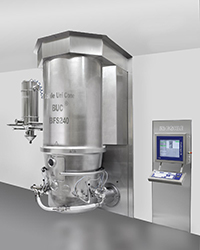
Figure 1: Bohle Fluid bed BFS 240 with an HMI
With this in mind, L.B. Bohle developed the Bohle Fluid Bed Systems with tangentially mounted spray nozzles and the Bohle Uni Cone BUC, which can accommodate batch sizes ranging from 1–500 kg.3 Built for 12 bar shock-resistant execution, the machinery is compatible with both organic and aqueous processes, is easy to clean — saving time and money — and offers short product transfer times. By design, the machines in the range are geometrically similar, facilitating scale-up procedure. Figure 1 shows a typical production-scale fluid bed apparatus with an HMI.
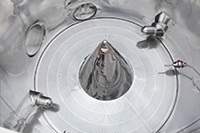
Figure 2: Bohle Uni Cone BUC with tangentially mounted spray nozzles within a BFS 30
The Bohle Uni Cone BUC (Figure 2) comprises a slotted air distributor plate with a conical displacement cone. These features induce complete particle fluidisation, which guarantees high coating uniformity and eliminates particle twinning issues. Besides experimental testing, this tangential particle movement has been analysed and substantiated using a combination of computational fluid dynamics (CFD) and discrete element methods (DEM).4 The following case studies demonstrate the versatility of the Bohle Fluid Bed System for granulation and coating applications.
Case study I: wet granulation
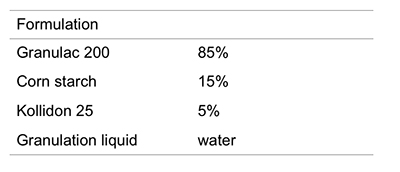
Table I: Placebo granule formulation (batch size = 15 kg)
For a classical wet granulation experiment, a placebo formulation was chosen containing fine lactose, corn starch as a filler and povidone as a wet binder (Table I). To achieve a more homogenous binder distribution within the final granules, povidone was added as a binder solution.5 The experiment was done with a BFS 30 (Figure 2), a pilot-scale fluid bed system containing two spraying nozzles and typically used to process 5–40 kg batch sizes
(depending on bulk density).
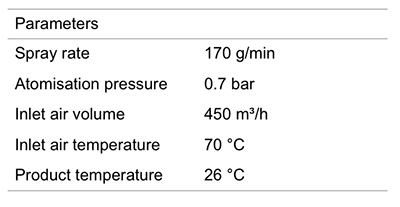
Table II: Wet granulation settings for the lactose formulation in a BFS 30
After a warm up phase, which also served to ensure homogenous blending of the placebo mixture, the granulation phase was performed at a spray rate of 170 g/min and an atomisation pressure of 0.7 bar (Table II). The inlet air volume was set manually by eye. Drying was subsequently done at the same inlet air volume and temperature settings. After granulation, the final granules were passed through a conical 1 mm rasp sieve (Bohle Turbo Sieve, BTS 200).
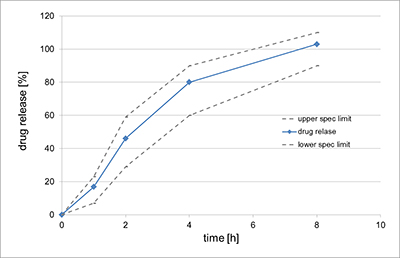
Figure 3: Particle size distribution of placebo granule.
Finally, sieve analysis results demonstrated a satisfactory level of powder agglomeration with a narrow particle size distribution and a small amount of fines (Figure 3). The lactose granules also showed a spherical shape, which is typical for tangential fluid bed agglomerates (Figures 4 and 5), demonstrating a very good Hausner Factor of 1.1 and a bulk density of 0.54 g/mL.
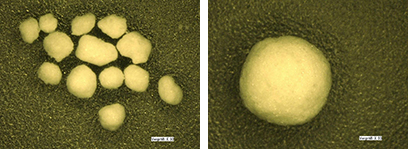
Left Figure 4: Lactose granules (light microscope, magnification x 50. Right Figure 5: Single spherical lactose agglomerate (light microscope, magnification x 50)
Case study II: pellet coating
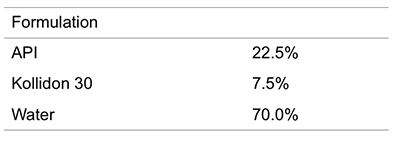
Table III: API coating solution (133% mass gain)
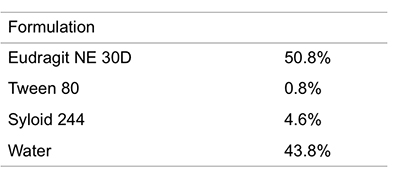
Table V: Sustained release coating dispersion
The goal of the first pellet coating study was to produce a sustained release multiparticulate capsule formulation using a BFS 30 to reformulate a commercially available product. Historically, a classical fluid bed with a Wurster insert was used to produce this product and pellet curing was done in a traditional oven.
The basis for the reformulation process was 15 kg of Cellets (d = 500 µm), which was initially coated with an active layer and, additionally, a second coating with a sustained release polymer dispersion. The first coating solution contained a high concentration of dissolved API and povidone as wet binder (Table III). The viscous solution was applied
using the parameters described in Table IV.
After the coating phase, a short drying phase was introduced for several minutes using the same inlet air conditions. The spray guns had to be cleaned properly before the sustained release polymer dispersion could be applied (Table V). Settings for the spray phase are listed in Table VI.
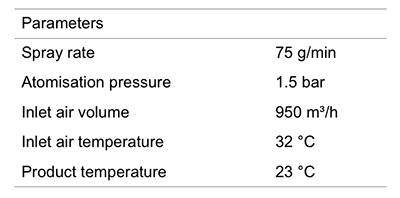
Table VI: Settings for the sustained release coating (10% mass gain)
Curing was also done with the same equipment at an inlet air volume of 950 m³/h at 50 °C for 3 h. Previous experiments in which oven curing was compared with fluid bed curing had shown that a time period of 24 h was needed to achieve the same results in a traditional oven.
Thus, using the same equipment not only made the whole process much simpler, but also made it significantly shorter compared with traditional processing. Finally, drug dissolution tests were done in demineralised water, which verified the effective application of the sustained release coating (Figure 6) and a successful reformulation.
Case study III: pellet coating
The third case study deals with a sustained release pellet formulation, which was processed using production-scale Bohle Fluid Bed Systems (BFS 120 and BFS 240). First, Cellets (d = 250 µm) were coated with an API and a typical wet binder until a mass gain of 25% was achieved. The second coating layer, comprising a sustained release polymer solution containing ethyl cellulose, was applied until a mass gain of 120% was achieved. During the second coating, the initial batch had to be divided up into three sub-batches because of the large increase in bulk volume and mass gain (final pellet size was approximately 700 µm). Coating in a BFS always led to high yields (less than / equal to 0.4% agglomerates) even after processing for 7 days in a three-shift operation. Figure 7 shows sectional views of the final pellets: the coating layer as well as the initial API layer can be clearly seen.
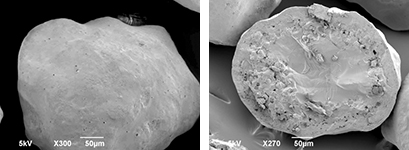
Figure 7: SEM photos of sustained release pellets (sectional view)
Conclusion
Using tangential fluid bed technology represents the state-of-the-art of pharmaceutical manufacturing for particle coating, granulation and drying. Furthermore, with the innovative Bohle Uni Cone BUC, complete particle fluidisation is assured, which leads to high coating uniformities, high final product yields and the elimination of particle twinning effects.
References
- D.M. Parikh, J.A. Bonck and A. Mogavero, Batch Fluid Bed Granulation, Handbook of Pharmaceutical Ganulation Technology (Marcel Decker, New York, New York, USA, 2007).
- D.E. Wurster, Particle Coating Apparatus, US Patent 3241520 A22 (1964).
- L.B. Bohle Maschinen + Verfahren GmbH, Bohle Uni Cone BUC, registered trademark 01659067 (2012).
- www.lbbohle.de/en/process-machines/granulation/bohle-fluid-bed-system-bfs.
- P. Serno, P. Kleinebudde and K. Knop, APV basics: Granulieren (Editio Cantor Verlag, Aulendorf, Germany, 2007).





